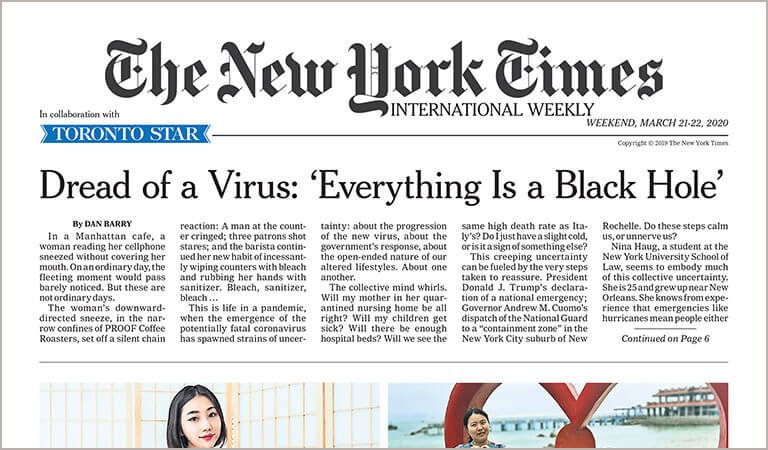NYT: The Legacy and Evolution of The New York Times

Few names in journalism carry as much weight and recognition as the NYT, short for The New York Times. Whether you’re flipping through the physical paper, browsing its website, or engaging with its puzzle section, the NYT has earned its place as a household name across generations. It’s more than just a newspaper—it’s an institution, a voice of record, and a beacon of serious journalism.
From its humble beginnings in the mid-19th century to its current role as a multimedia powerhouse, the NYT has remained a cornerstone of public discourse. And while some people associate it primarily with news and politics, others know it for its editorial opinion, best-selling book lists, or addictive puzzles. This diversity in content, matched with its commitment to editorial excellence, is what continues to set the New York Times apart in a noisy digital age.
In this article, we’ll break down what makes the NYT so iconic, how it’s adapted over time, and why it still matters—perhaps more than ever—in our information-driven world.
A Brief History of The New York Times
The New York Times was founded in 1851 by Henry Jarvis Raymond and George Jones. At the time, it was a modest operation with a goal to produce sober, trustworthy journalism that avoided sensationalism—an admirable aim during an era when yellow journalism was rampant. That goal shaped the DNA of the paper, and it still holds true today.
By the early 20th century, the NYT had already earned a reputation for integrity, accuracy, and rigorous reporting. It was acquired by Adolph Ochs in 1896, who famously set its slogan as “All the News That’s Fit to Print.” That phrase, still printed on the front page, became symbolic of the paper’s editorial values: objectivity, responsibility, and intellectual depth.
As the decades rolled on, the Times covered world wars, economic depressions, moon landings, presidential elections, and major cultural shifts. It won its first Pulitzer Prize in 1918 for its World War I reporting, and as of today, it has collected more than 130 Pulitzer Prizes—the most of any newspaper in history. The NYT didn’t just report history—it helped define how people understood it.
NYT in the Digital Age
Like many legacy publications, the NYT faced major challenges with the rise of the internet. As traditional print circulation began to decline in the 2000s, many media outlets struggled to adapt. But the Times made strategic moves to transition into the digital world without compromising quality, and that decision paid off.
One of the NYT’s smartest decisions was implementing a digital subscription model in 2011. While many publications were still offering free content and scrambling for ad revenue, the Times bet that its content was worth paying for—and readers agreed. As of 2024, the NYT boasts over 10 million digital subscribers, spanning across news, cooking, games, and more.
Its online platform has evolved far beyond just news articles. The NYT offers interactive storytelling, long-form video journalism, audio series like The Daily podcast, and even virtual reality experiences. The brand has shown that serious journalism can not only survive the digital transformation—it can thrive in it.
The Sections That Keep Us Coming Back
While the core of the NYT is still its news reporting, what makes it especially beloved is its variety of content. It isn’t just a political or business paper—it’s a full-on lifestyle guide, entertainment source, and cultural hub all rolled into one.
The Opinion Section
The NYT’s Opinion section is one of the most talked-about parts of the paper. Featuring a wide range of columnists from diverse political and intellectual backgrounds, it often sparks national debates. Voices like Paul Krugman, Maureen Dowd, and David Brooks have become influential thinkers whose columns drive conversations beyond the page.
But it’s not just about established voices. The NYT frequently publishes guest essays and op-eds that provide fresh perspectives from academics, activists, or people with personal stories that add a human dimension to current issues.
Arts, Culture, and Lifestyle
You don’t have to be a political junkie to enjoy the NYT. Its Arts and Culture section is equally rich, featuring theater reviews, film criticism, music analysis, and more. For bookworms, the NYT Best Sellers list is still one of the most trusted and referenced rankings in the literary world.
Then there’s NYT Cooking, a separate subscription service offering thousands of tested recipes, video tutorials, and meal planning tools. It’s become a go-to for home cooks everywhere and has its own devoted following.
The Crossword and Games
Let’s not forget about the NYT Games section, which includes the daily crossword, Spelling Bee, Wordle, and the Mini Crossword. These puzzles have brought the NYT into the lives of people who might not even read the paper.
The crossword, in particular, is a cultural icon. Edited by Will Shortz since 1993, the crossword isn’t just a game—it’s a daily ritual, a brain workout, and even a point of pride. In recent years, NYT Games has become so successful that it now earns millions in revenue on its own.
The NYT as a Cultural and Political Force
Whether you admire it or criticize it, there’s no denying that the NYT holds serious influence in both political and cultural conversations. Its investigative reporting has shaped public policy, exposed corruption, and held those in power accountable.
Landmark Reporting
The NYT broke some of the biggest stories of the last century—from the Pentagon Papers in 1971 to the Harvey Weinstein scandal in 2017, which helped fuel the #MeToo movement. Its journalists often put themselves at risk to bring important stories to light, a fact that underscores the paper’s commitment to the public good.
This dedication hasn’t gone unnoticed. The NYT has consistently ranked among the most trusted news organizations in the U.S., particularly among readers who value fact-checking, sourcing, and thorough investigative journalism.
The Critics and Controversies
Of course, the NYT isn’t without its critics. Like any institution of its size and influence, it has faced accusations of bias—from both the left and the right. Some believe it leans too liberal; others argue it gives too much space to centrist or conservative viewpoints.
The paper has also made its share of mistakes, including flawed reporting or controversial editorial decisions. However, one thing the NYT usually does well is acknowledge those errors and course-correct publicly—something many other media outlets struggle with.
Why the NYT Still Matters
In a world where misinformation spreads faster than facts, the NYT still stands as a pillar of credible journalism. Its reporters are often the ones who break news that other outlets follow. Its editorials influence lawmakers. Its culture reviews shape public opinion. And its digital innovations continue to set standards in the media world.
A Source You Can Rely On
There’s something comforting about knowing that a resource like the NYT exists. While no outlet is perfect, the Times is one of the few that consistently puts time, effort, and care into each piece of journalism. The fact that it still prints a physical edition every day, while operating a world-class digital platform, says a lot about its commitment.
Trusted by Millions, Across Generations
From Baby Boomers to Gen Z, the NYT continues to evolve with its audience. Whether it’s through a well-researched investigative article, a hilarious Spelling Bee session, or a cozy new chicken recipe, the NYT finds ways to connect with readers of all kinds.
Final Thoughts: More Than Just a Newspaper
The New York Times—or NYT, as it’s fondly referred to—isn’t just a news source. It’s a trusted companion, a cultural curator, and a platform for ideas. In an age of clickbait and shallow takes, the NYT still believes in the power of depth, nuance, and truth.
If you’ve never engaged with it beyond the headlines, it might be time to dig a little deeper. Whether through its award-winning journalism, iconic crossword puzzle, or rich cultural commentary, there’s always something to discover in the world of the NYT.



